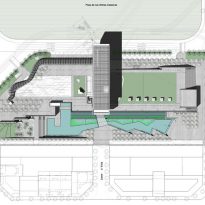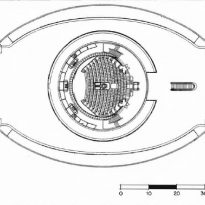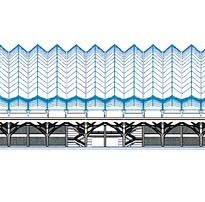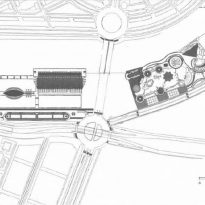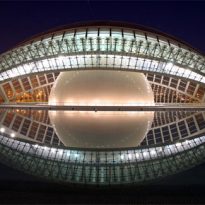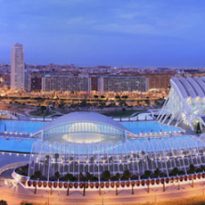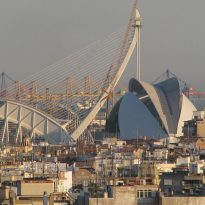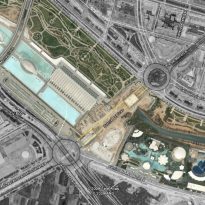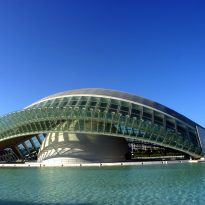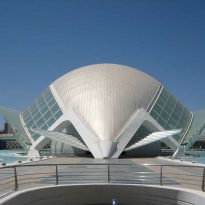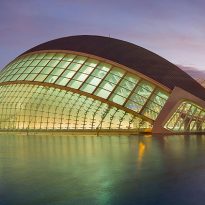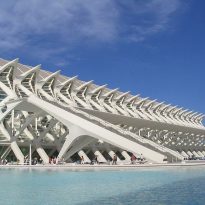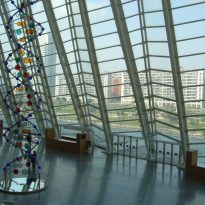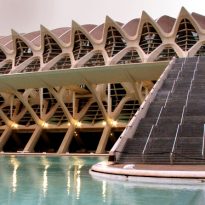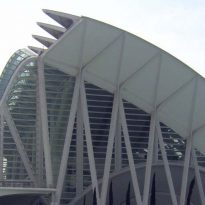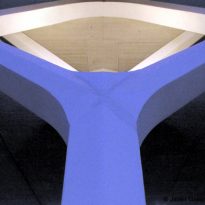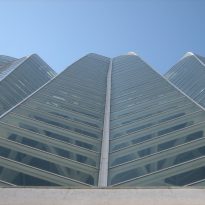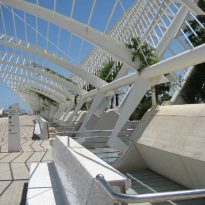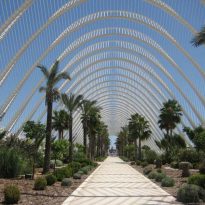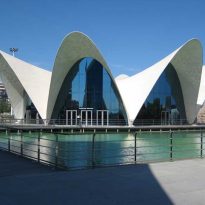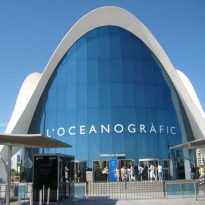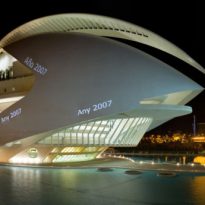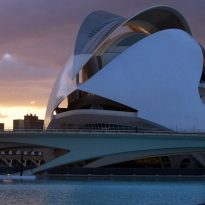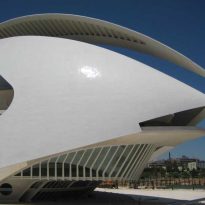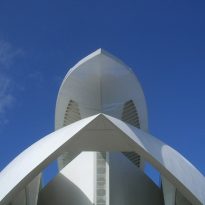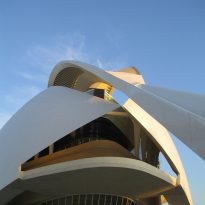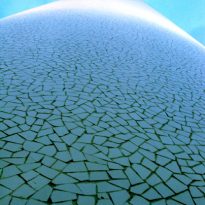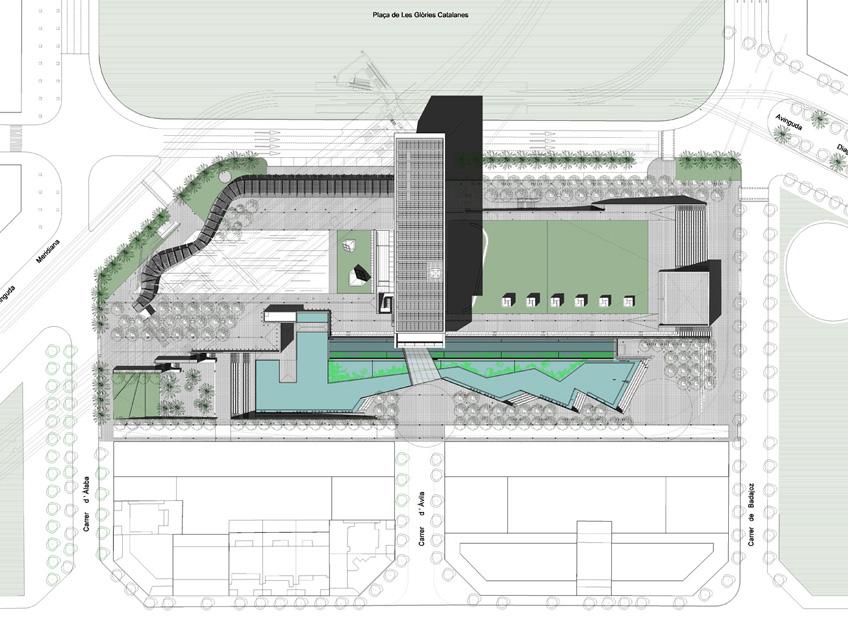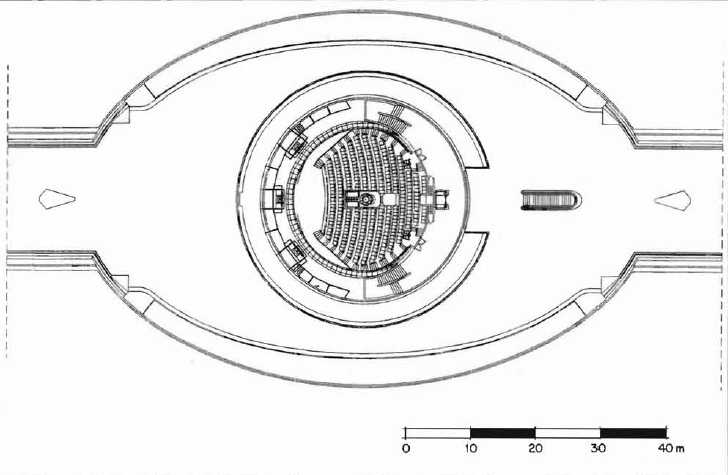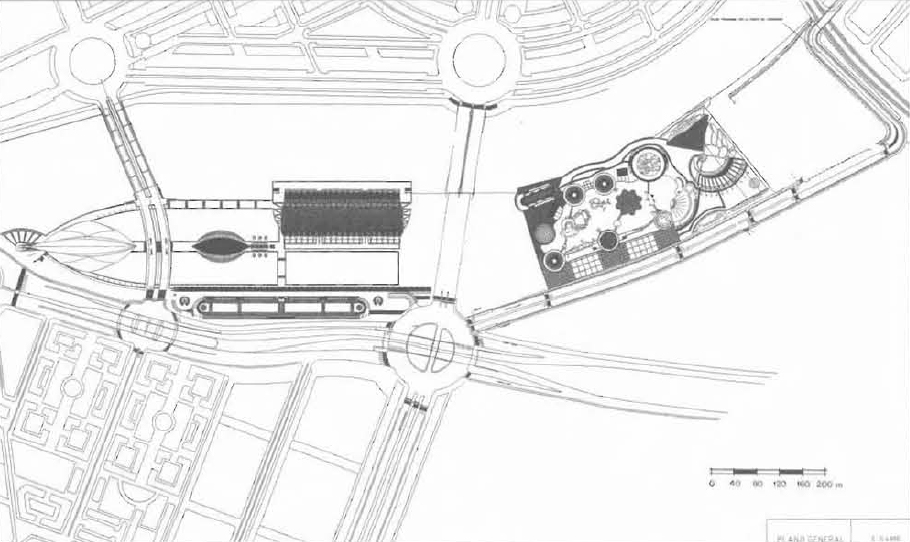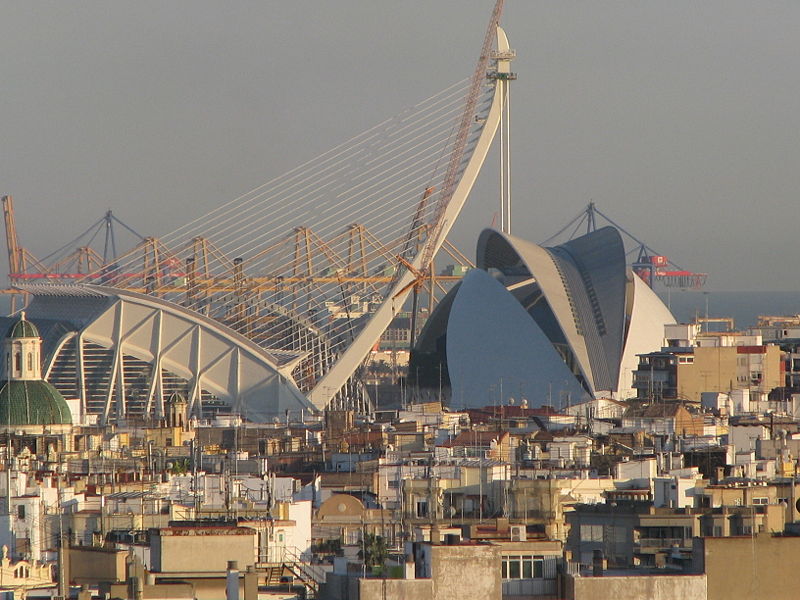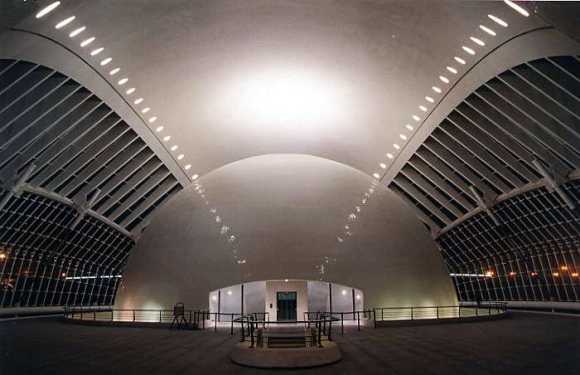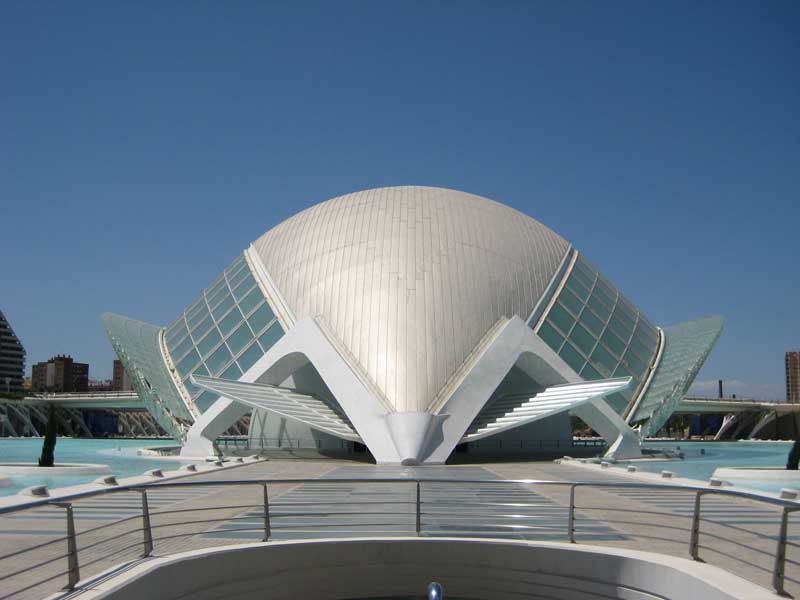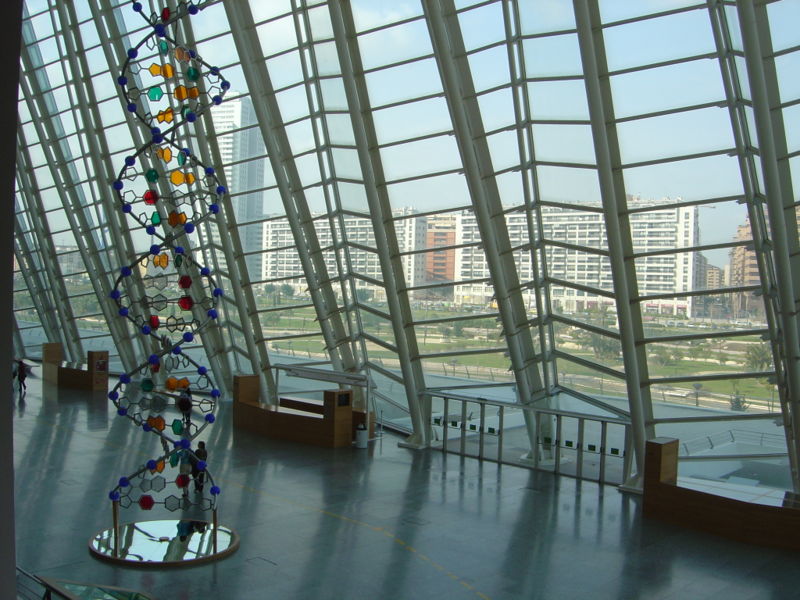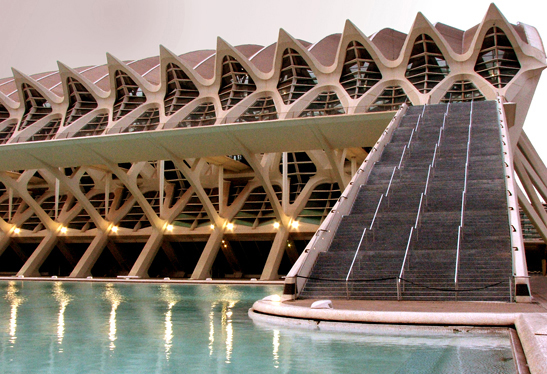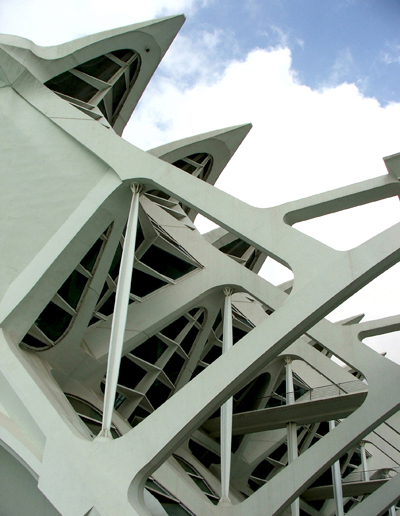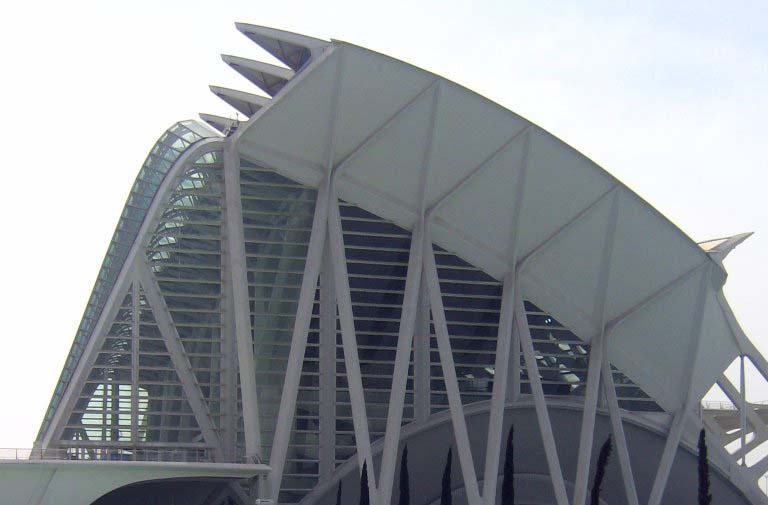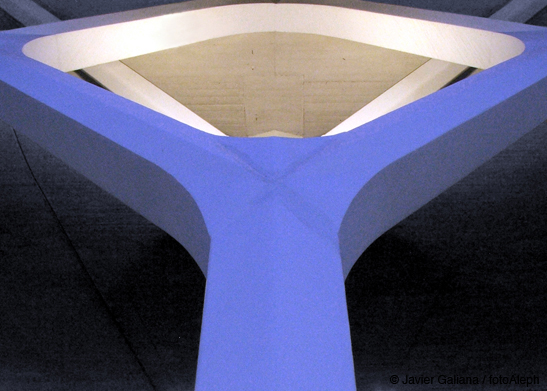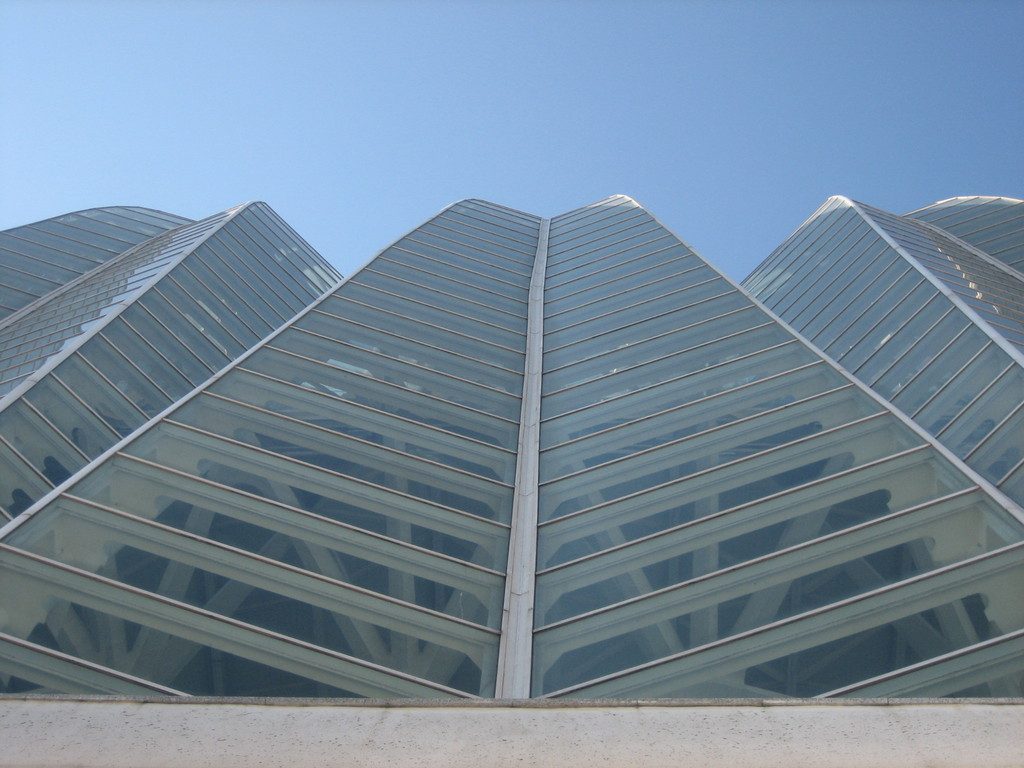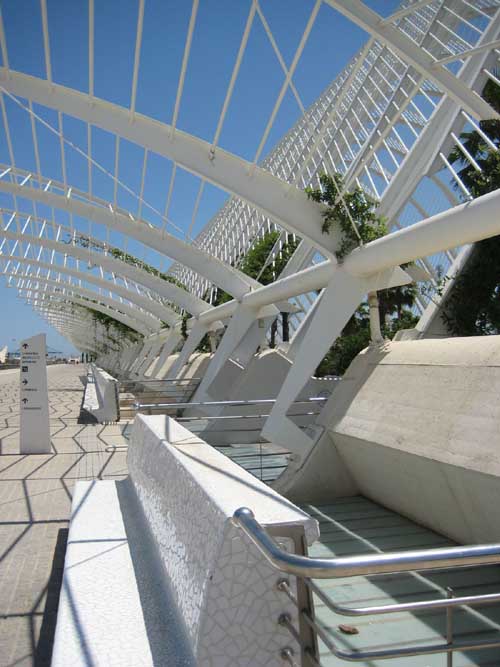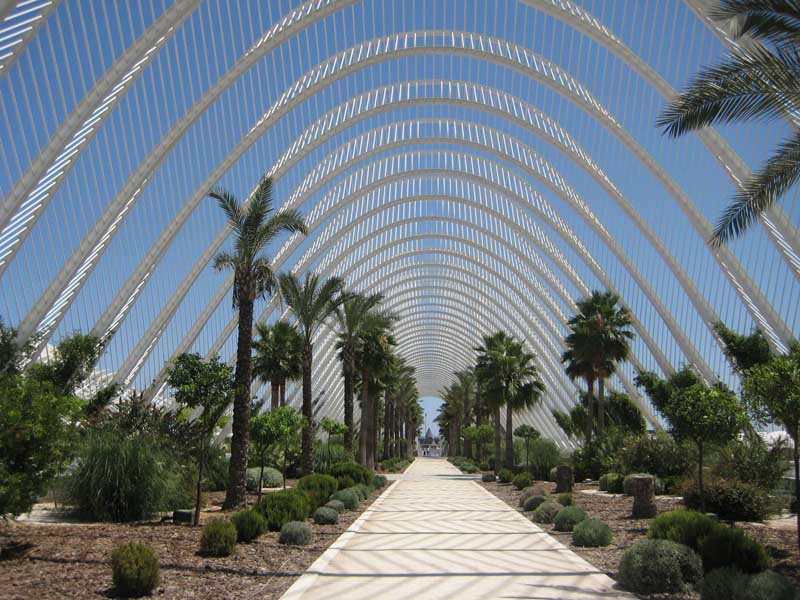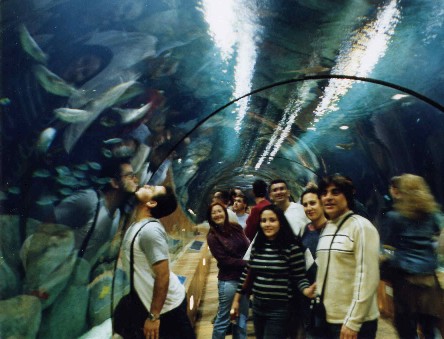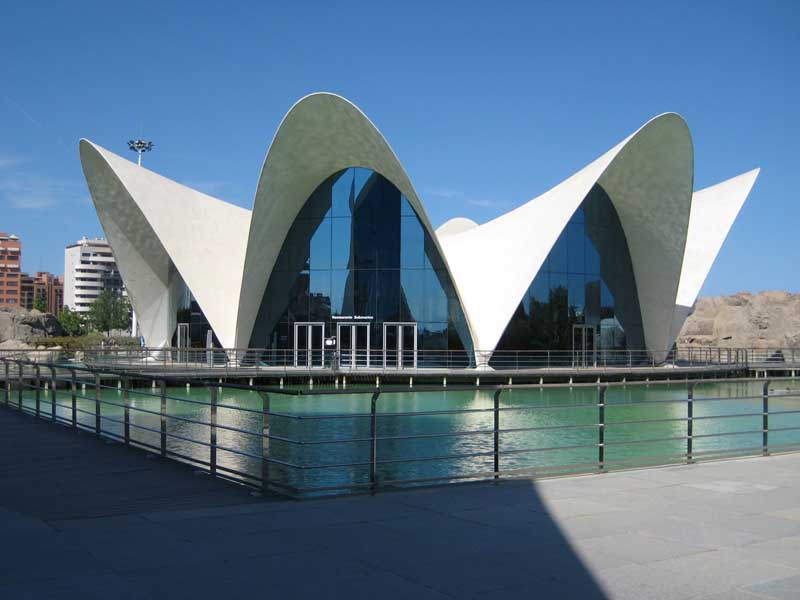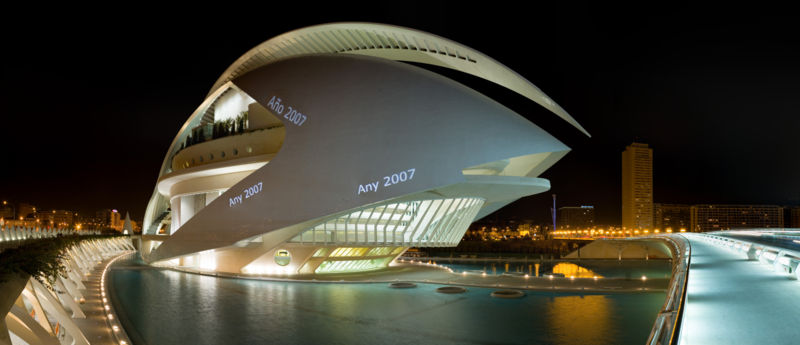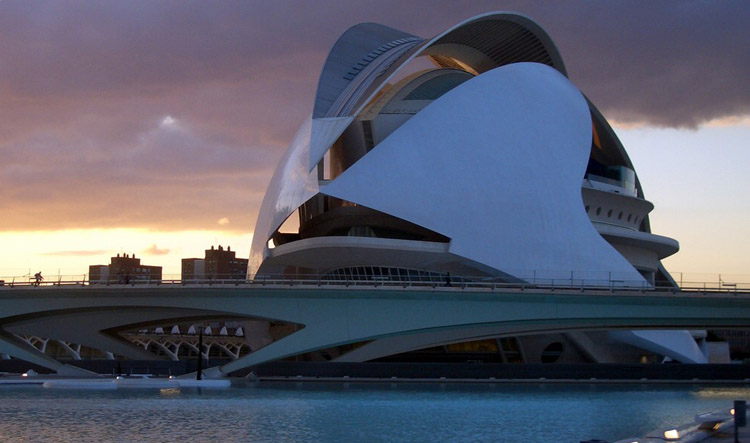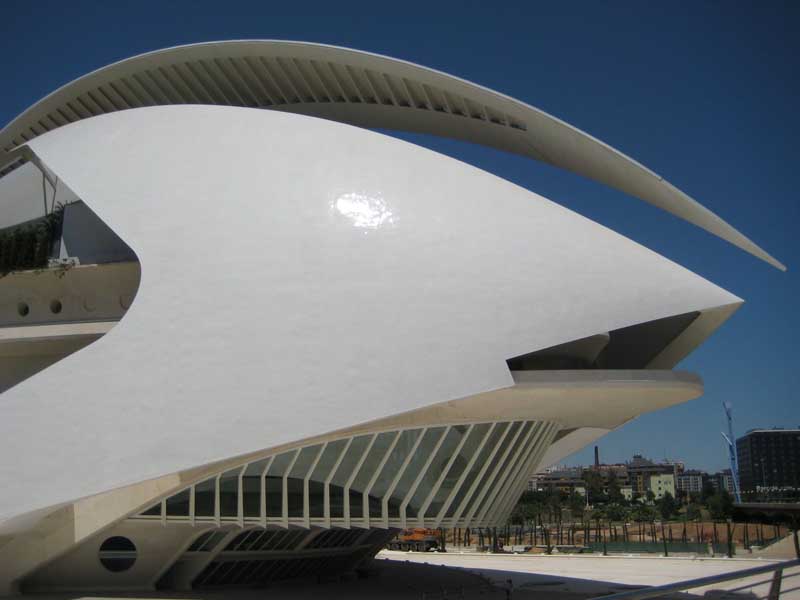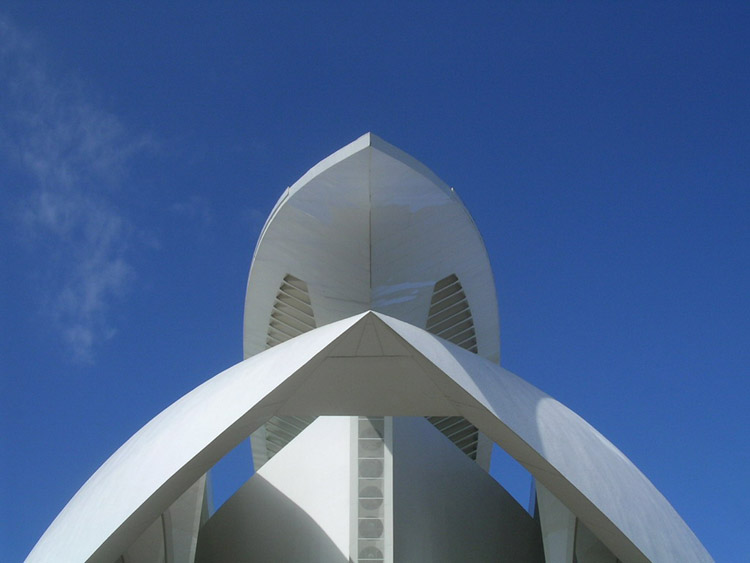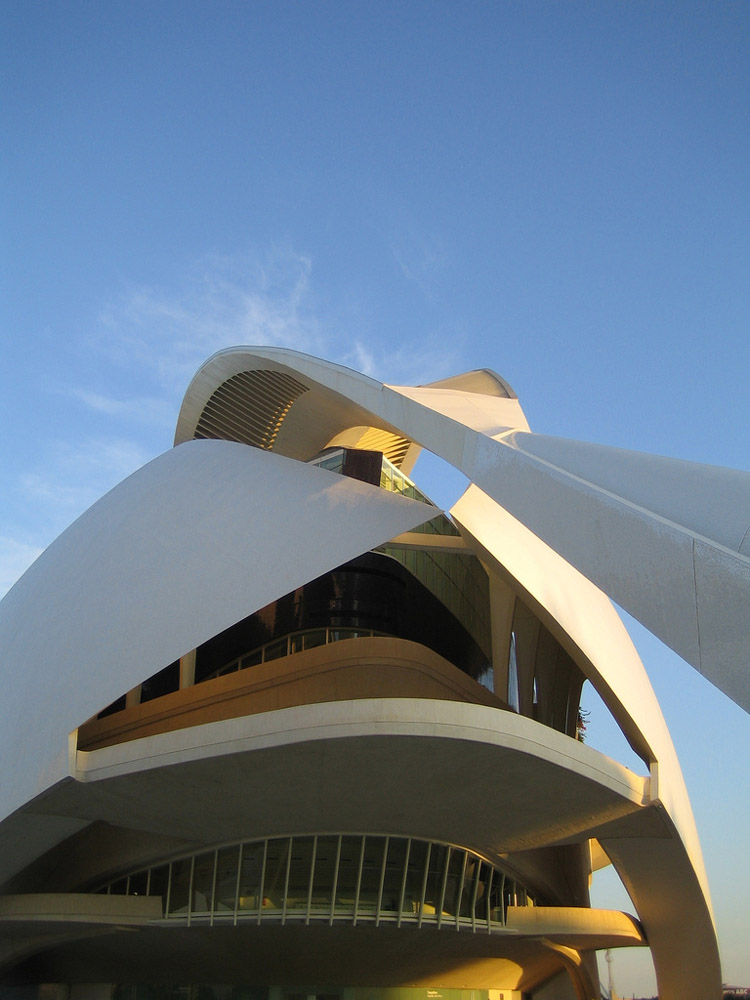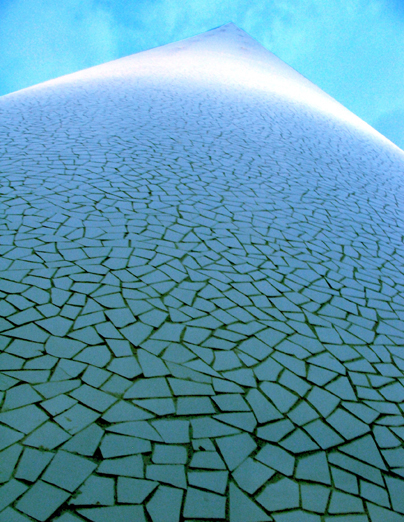City of Arts and Sciences

Introduction
In the late’80s, Joan Lerma, the then President of the Generalitat Valenciana, adopted the idea of building a scientific and cultural center that serves the entire community. The idea was nothing less than a professor of botany at the University of Valencia, José María López Piñero.
This idea was intended to give the city a center where they could gather knowledge and entertainment. A place to learn, travel, and enjoy. A space was provided to the residents of Valencia, but also could be visited by people from all over the world.
In order to develop such a project, Lerma formed a special team that is tasked. This team would travel to different parts of the world where projects like these have already been carried out so as to better understand the needs and responses.
The initial project consisted of a communications tower (it would be the third highest at the time), a planetarium and a science museum.
But this idea had detractors from the start. The opposition parties generated controversy by saying that it was a “work Pharaonic” only wanted to show the power of the governorship of his time.
However, despite the obstacles, managed to Lerma was the Spanish architect Santiago Calatrava would take over much of the design and construction could begin a few months later.
This did not stop the opposition, who raised their complaints and grievances, and managed to stop the construction, with another project “more consistent in scale and investment.”
After strenuous fighting between the parties, it decided to hold the City of Arts and Sciences, a project that would keep two of the top buildings, replace the communications tower and add a new element to the project (including the architect Félix Candela in their design). After two years, the works begin again to shape this huge investment.
Situation
The project is part of a city with a long history in Spain. Called to be not only a scientific and cultural, but also a new urban hub linking the city, the project extends over a wide range of Valencia degraded.
In 1957, a strong flood of the river Turia caused a catastrophe in the city of Valencia. After this tragedy, it was decided to divert the river to the south of the city, and in the dry river bed and build a fleet of ten kilometers in length to cross the city. The topography in which the project is implemented is flat and is on the right margin of the final section of the old river Turia. The idea is to recover the old urban area between this river and the motorway Saler.
Due to the importance of this route that ends on the Valencian coast, and enhanced by the proposed new Calatrava is also a planned auction of the same. This contribution has already been approved and allocated to two major studies in architecture that work together: Ateliers Jean Nouvel (with the collaboration of José María Tomás Valencia), and GMP. The approach is to create the link between the city and the sea since the last installment of the City of Arts and Sciences, to the same port, restoring beaches and creating green space with some towers.
Concept
The predominant idea of the project was to restore a neglected area of Valencia, as well as to provide a linear park that stretches through the city. The project would be one link in a chain that was designed to take a leap into the third millennium.
The series of five buildings planned for this city will join the cultural axis linearity. Accompanying sense of it and provide open space and public. Also, add features Valencians.
Throughout almost two kilometers and with an area of 350,000 square meters, the project has been the hallmark of unsurpassed Calatrava. Often named as a “city within a city”, the creation of the Valencian architect cause amazement and surprise.
Respecting the tradition of the Mediterranean sea and light blue and white blend with the pseudo-futuristic architecture of the author. The old tradition of the city leading to these monumental modern sculpture.
Each of the buildings has its own concept and responds to different features. However, everyone is working with the same materials or the same colors, so you can understand the project as a whole. ” In addition, large bodies of water unite all parties and give a sense to work.
Spaces
Palau de Les Artes Reina Sofía
Is the main building of the complex. Located on the western side of the axle and is a landmark urban majestic. This component represents the commitment to art, spreading the music, dance and theater. Their suggestive reference to the nautical activity and are almost like a metaphor of a boat that had run aground on the ancient river bed of the Turia.
The building has 37,000 square meters and more than 70 meters in height. Inside you will find four large rooms: the main hall, the Aula Magistral, an amphitheater, Theater and House. And it adds a showroom. The spaces are varied and numerous. Cantilever slabs at different heights over and joined by stairs hidden between the covers metal side, in addition to the elevators with panoramic views of the city.
L’umbracle
This is an elongated structure that forms an open air space. By arches fixed and floating is generated from an area where you can see all the Arts. Its interior houses all kinds of vegetation in the area of Valencia (jara, lentiscus, rosemary, lavender, honeysuckle, bougainvillaea, palms) as well as a tour of contemporary sculptures.
L’Hemisféric
This creation of Calatrava has become perhaps one of the most representative of the City of Arts and Sciences. Their distinct and clearly look like an eyeball has been placed on the center stage. Located on the L’Umbracle is flanked by two rectangular ponds to the north and south.
L’Hemisfèric hosts a technological and educational, IMAX rooms, audiovisual, art, and a planetarium. It can give classes, make presentations, or even entertainment shows.
Museu de les Ciéncies Príncipe Felipe
It has 40,000 square meters on three floors. His image appears to be outside the skeleton of a prehistoric animal or perhaps a huge whale. The particularity of being an interactive museum of science makes it a special place for youth and children. Unlike any other conventional museum in the late signs of “prohibited touching” each sample and invites them to come and participate, learning in each of the interventions. Its appearance descontracturado playful and striking as the huge “bones” which was coined.
L’Oceanográfic
With a volume of 110.000m ² became the largest European oceanographical and third globally. Its 45,000 species from around the world make the visit a thorough understanding of the deep sea. Cover in the form of water lily is the work of architect Felix Candela.
Estructura y materialidad
Museu de les Ciéncies Príncipe Felipe:Its design is based on the repetition of the asymmetric structure in the shape of ribs. These ribs are connected by metal white horizontal longitudinal elements that surround the front glass. As is often repeated Calatrava in his designs, the structure is the protagonist and is always in sight.
L’Oceanográfic: The building oceanographical emblem consists of hyperbolic paraboloids constructed in concrete, and its shape looks like a water lily. The shell that surrounds the glass walls enclosing the volume.
L’Hemisféric: The building consists of a reinforced concrete structure except that the casing is metal, based on a foundation based on screens and large slabs of song. The area is composed of concrete gunnited on metal structure formed by meridians. The rigidity of the structure is achieved through reinforced concrete walls that enclose the area around the area of access, and through the forging of the different floors and beams of the sloping terraces.
The metallic covering is composed of five arches cut section drawer is supported on tripods at the ends of reinforced concrete at the ends. The arches are linked together via profiles laminated beams and curved drawer.
Coating materials are used to seek the balance between the concrete surfaces and the use of the building: granite flooring with different shapes and treatments, carpeting in the room paraments and ponds, “Trincadis” in the dome of concrete and ponds, and Carpentry in stainless steel.
Palau de Les Artes Reina Sofía: The cover or “pen” is the most spectacular structure with 230 meters long and more than 70 m. height while the two “shells”, which embrace the buildings are constructed of steel sheet with an approximate weight of 3,000 tons. lined by the outer ceramic coating. The maximum dimensions of the building envelopes, taking into account the curved shapes that are up 163 m. long and 87 m. wide.
Used in its construction:
- More than 77,000 cubic meters of concrete.
- With more than 275,000 cubic meters of earthwork
- About 1750 meters of piles
- 38,500 square meters of granite
- Over 20,000 square feet of trencadís
- More than 1450 units of doors
- 3360 square meters of glass.
- Nearly 20,000,000 kg of structural steel corrugated
- More than 10,000,000 kg of structural steel
L’umbracle: Calatrava designed it from the outset in white concrete, like the rest of the ensemble, with a heavy metal. Its structure resembles a lattice, with a succession of 55 fixed and 54 floating arches, metal. The maximum height from the bottom of the arches fixed to floating the key is 18 meters. The tour covers the floor with wood Teak, a tropical wood suitable for installation in outdoor areas, as it supports the assault of wind and rain with a minimum wear.
